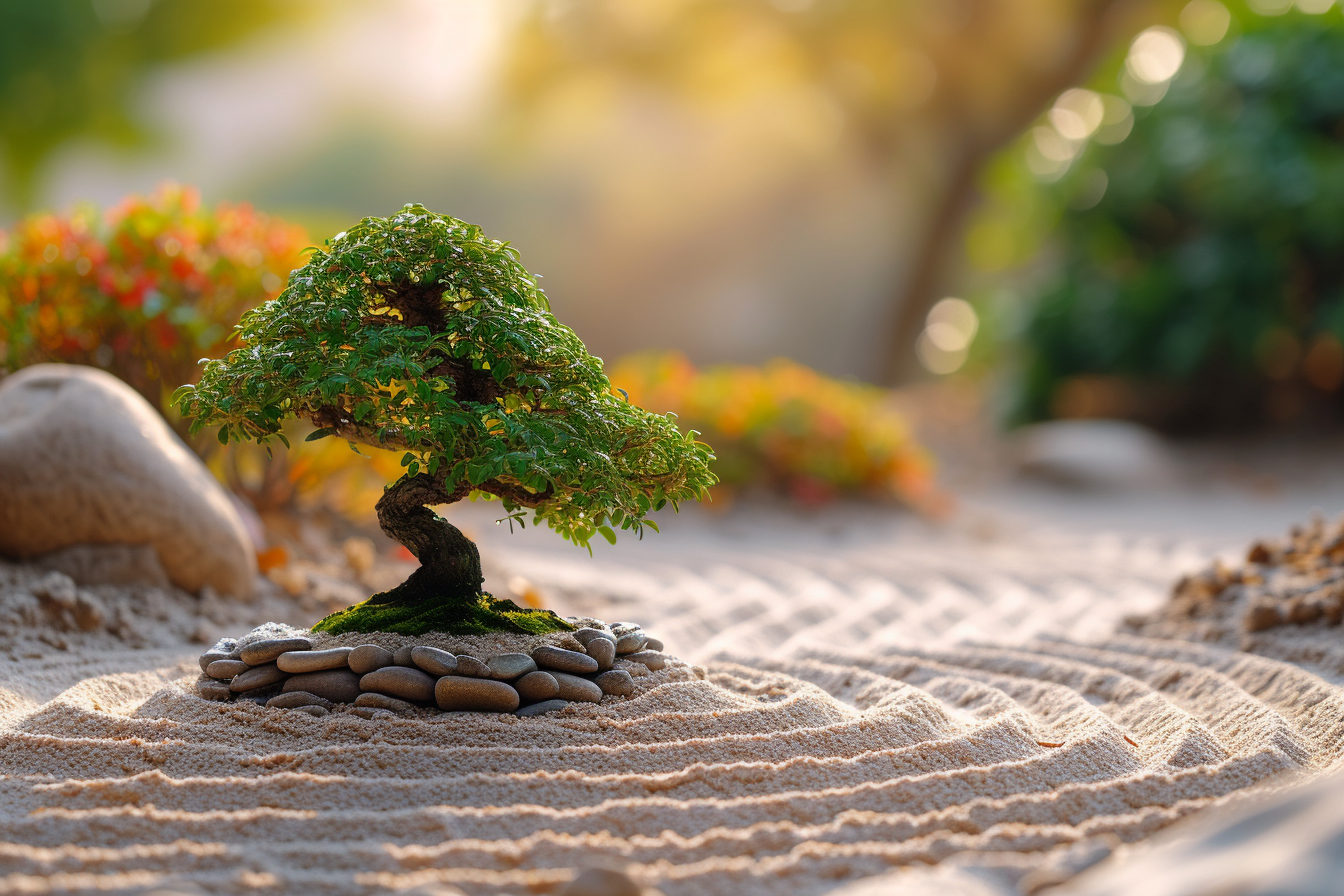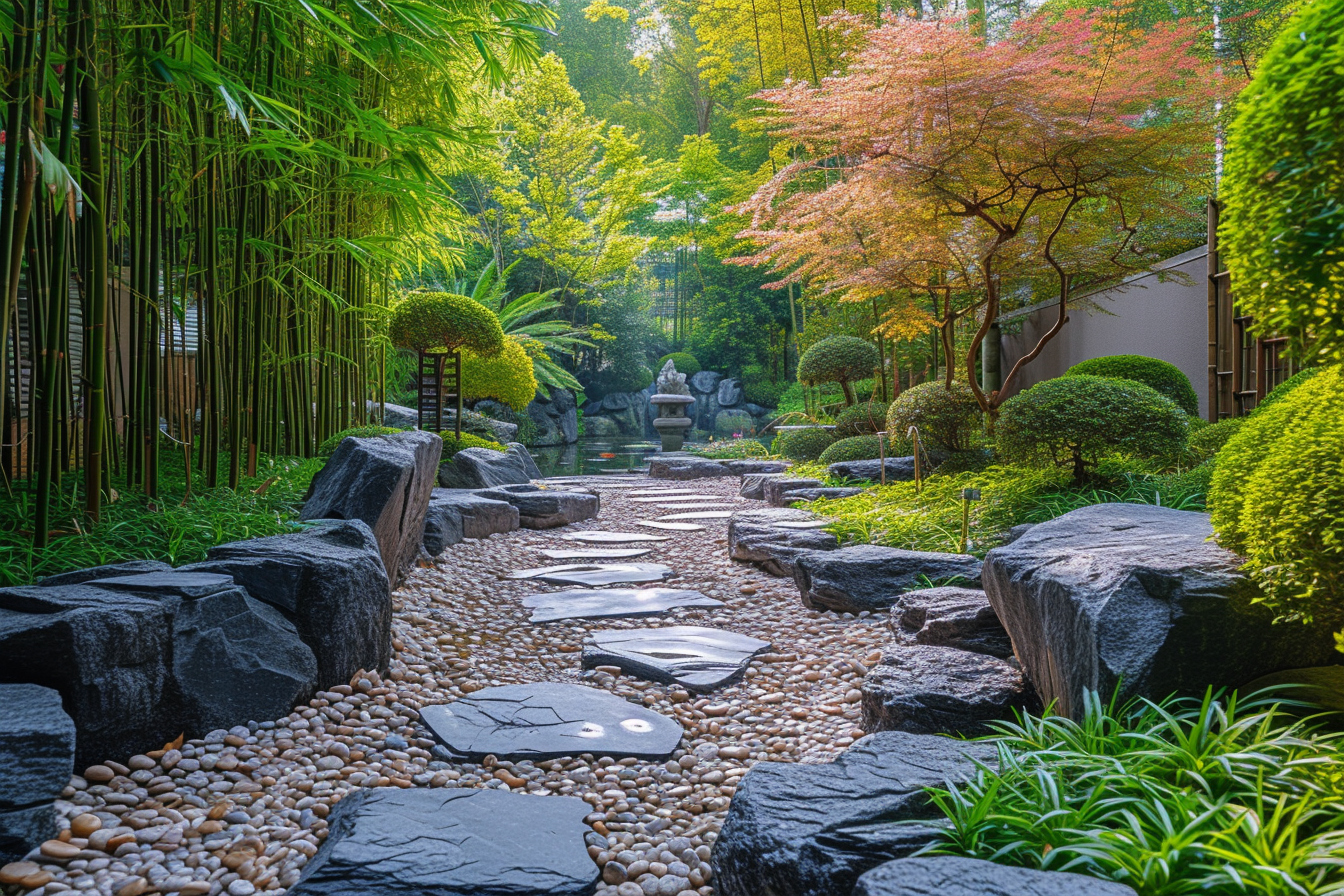The art of Japanese garden design is a centuries-old tradition that brings serenity and nature to everyday life. With carefully selected plants, water features, rocks, and ornaments, these spaces are designed to create a peaceful and reflective environment. Whether you have a vast backyard or a modest balcony, incorporating the Zen style into your outdoor area can offer a tranquil retreat from the hustle and bustle of the modern world.
Understanding the principles of zen garden design
Balance and Harmony are the fundamental principles in Japanese garden design. The concept of ‘yin and yang’ is often employed, symbolizing complementary opposites that create unity and balance. A well-designed Japanese garden exudes tranquility through its careful blending of these elements.
Simplicity and Naturalness, or shizen, is another key aspect, along with Austerity (koko) and Elegance with a touch of Mystery (yugen). By adhering to these principles, your garden will not only be visually appealing but also imbued with deeper philosophical meaning.
Selecting the right elements for your japanese garden
Incorporate natural elements
Plants and trees
Choose plants that not only survive but thrive in your local climate. Evergreens such as pine and juniper create structure, while flowering trees like cherry or plum add seasonal color. Remember to embrace wabi-sabi, the beauty of imperfection, by allowing plants to grow in a somewhat natural state.
Rocks and gravel
Positioning rocks is a crucial element in a Japanese garden. They represent mountains and islands, grounding the space with their solid presence. Gravel, often raked into patterns, can symbolize water or simply provide a contrasting texture to the foliage.
Water features
Whether it’s a small fountain or a koi pond, water adds movement and sound that enhance the tranquility. Ensure that the water element is clean and well-maintained, serving as a clean mirror to the sky and surroundings.
Architecture and pathways
Lanterns and pagodas
Stone lanterns not only provide light but also act as sculptural elements. Similarly, pagodas offer height and focus, drawing the eye through the space.
Bridges and walkways
Gently curving pathways made of stone or wood invite slow, contemplative walks, while bridges over water elements can symbolize the journey through life or the path to enlightenment.
Fencing and gates
Bamboo fencing and simple wooden gates set boundaries and create intimate spaces, subtly guiding visitors on where and how to explore your garden.
Combining the elements for overall zen feel
Creating a focal point
A carefully placed statue of Buddha, an intricately cut bonsai, or even a striking rock can serve as your garden’s focal point. Position these elements where they can be contemplated from different vantage points.
Embrace asymmetry
True beauty lies in natural asymmetry and imperfection. A Japanese garden should not be overly planned or symmetrical but should flow and reflect natural landscapes.
Layering and framing
Deliberate layering of plants and features can create depth and intrigue. Using the garden’s natural terrain and strategically placing taller elements in the background with shorter ones in the front helps frame views and scenes within the garden.
Maintenance tips for a serene zen space

Regular raking and pruning
Maintaining the garden’s appearance requires regular upkeep. Raked gravel patterns can become disrupted, and plants can overgrow their intended space. Regular raking and careful pruning not to over-trim are essential in preserving the garden’s intended look and feel.
Preserving the natural look
Insects and weather can affect your garden’s elements. Be vigilant in treating plants for disease and ensuring that rocks and architectural elements remain clean and free from moss or debris, unless it contributes to the natural aesthetics.
Inspiration from authentic japanese gardens
Looking for inspiration in authentic Japanese Zen gardens is a beneficial practice. The world-renowned Ryoan-ji in Kyoto or the serene confines of Tokyo’s Happo-en showcase the epitome of balance and beauty that can inspire your own designs.
Tailoring zen gardens to fit your space
Small-Scale solutions for limited spaces
Even on balconies or small city gardens, the principles of Japanese garden design can apply. Miniature rock gardens, container plants, and even indoor water features can all contribute to a Zen atmosphere.
Integrating zen elements with existing landscapes
Incorporating aspects of a Japanese garden doesn’t require a complete overhaul. Introducing a stone lantern, a bamboo fountain, or simplistic seating can bring Zen elements into your current outdoor space without significant changes.
Japanese garden decorating: cultivating solitude and reflection
Zen gardens are intended to be places of solitude and contemplation. Creating secluded seating areas where one can sit, meditate, or simply breathe deeply adds to the garden’s restorative properties.
With these decorating tips, transforming your outdoor space into a Zen-inspired sanctuary is within your reach. By appreciating the principles and elements that make Japanese gardens unique and meditative, you can create a personal haven that expresses peace and tranquility. Embrace a patient and thoughtful approach as you gradually incorporate these aspects into your own garden, and enjoy the journey as much as the destination. The path to crafting a serene oasis is both a creative and spiritual one – enjoy every step.











